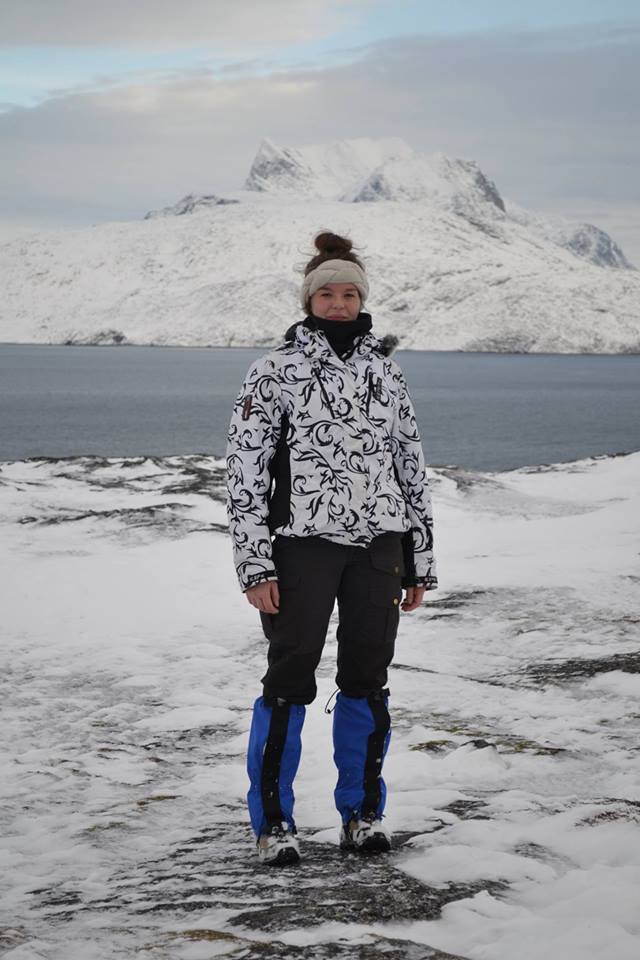PhD degree awarded, congratulations Pernille!
Diving into the soils at a microscopic level and at high resolution is paramount to understanding details of the lives lived hundreds of years ago. This has been demonstrated by Pernille Lærke Krantz Trant (UrbNet and Department of Geoscience), who defended her PhD dissertation on 5 February 2021.

Geochemistry and micromorphology give new insights into the indoor activities carried out several centuries ago
Geochemistry and micromorphology have an increasing impact on the study of the past. Diving into the soils at a microscopic level and at high resolution is paramount to understanding details of the lives lived hundreds of years ago.
This has been demonstrated by Pernille Lærke Krantz Trant from Aarhus University, who defended her PhD dissertation ”Indoor use of a Viking Age house: Combining geochemistry and multi-spectral methods in Ribe, Denmark” on 5 February 2021. Trant has worked on her PhD project at the Department of Geoscience and Centre for Urban Network Evolutions.
Chemical markers recorded in clay floors
All human activity results in a set of representative chemical markers. And these are recorded in the soil – for instance, in the dirt that piles up on clay and packed earth floors of ancient houses during their use. At excavations, the chemical markers can be measured in the deposits using different methods from the natural sciences. Three papers co-authored by Trant (as first author) and Trant’s dissertation has through multi-element analyses of archaeological deposits revealed new sides of the early urbanisation of Viking Age Ribe in Denmark.
Ribe emerged as a town around AD 700 and grew into an emporium, important in the trading networks of the North Sea. The town had a structured marketplace with an organised system of parallel plots for houses. Ribe has been investigated archaeologically for decades, but from June 2017 to August 2018 the Northern Emporium excavations in the central part of the thick marketplace deposit layers made it possible to test geoarchaeological methods in a hitherto unprecedented resolution. The Northern Emporium excavations were carried out as a collaboration between Aarhus University and Museum of Southwest Jutland – Søren M. Sindbæk directed the excavations, funded by the Carlsberg Foundation.
Trant’s work has, among other things, shown that it is necessary to use a sampling strategy with a relatively fine-meshed grid when taking soil samples in order to learn more about the past activities in indoor spaces. The studies have shown that implementing fast and cost-efficient analyses as e.g. pXRF brings the opportunity to increase sampling resolution, when sampling in a grid across indoor surfaces. It also revealed that a high-resolution grid of 0.25 x 0.25 m gives a very detailed understanding of different activity areas, while lower resolutions as a 1.0 x 1.0 m grid only captures the very general signals. New, spectroscopic tools as the vis-NIRS for analysing the soil samples have also been tested in the study, showing potential for future usage. However, further study is needed as the spectral predictions generally struggled to predict the full range of elemental concentrations.
“The results of my PhD study can help optimise the sampling strategy and the subsequent analyses at future excavations. Furthermore, I hope that my results will make people in the field consider how they sample and why they do it in this way. I also hope that they will reflect more upon their choice of analysis method”, says Pernille Lærke Krantz Trant.
As for the area investigated in Ribe, it has been possible to give new insights into the indoor activities of the specific houses excavated during the Northern Emporium project. Together with the unearthed artefacts, the chemical composition of the floors of two houses built almost right on top of each other thus revealed how different areas of the houses were used: for textile processing, for metalworking, for preparing food, as storage, as a sitting/eating area, as a high-traffic corridor etc., “showing the large potential for recognition of a range of different activities that cannot always be discerned while excavating”, says Pernille Lærke Krantz Trant. Through the excavations and Trant’s studies it has been shown that geochemistry and micromorphology when used together present a strong tool for analysing ancient deposits.
Further information about the dissertation
Assessors of the dissertation were Associate Professor Johan Linderholm (Department of Historical, Philosophical and Religious studies, Umeå University, Sweden), Senior Lecturer Clare Wilson (Biological and Environmental Sciences, University of Stirling, Scotland) and Professor Søren Bom Nielsen, chairman (Department of Geoscience, Aarhus University, Denmark). After the defence, the assessment committee unanimously recommended that Pernille Lærke Krantz Trant be awarded the degree of PhD by the Faculty of Natural Sciences, Aarhus University.
Main supervisor of the project was Associate Professor Søren M. Kristiansen (Department of Geoscience and Centre for Urban Network Evolutions, Aarhus University, Denmark) and co-supervisor was Professor Søren M. Sindbæk (Centre for Urban Network Evolutions, Aarhus University, Denmark).
The three papers included in the dissertation are:
- Trant, P. L. K., Kristiansen, S. M., Christiansen, A. V., Wouters, B. & Sindbæk, S. M. (2021). "Sampling density and spatial analysis: a methodological pXRF study of the geochemistry of a Viking-Age house in Ribe, Denmark", Archaeological and Anthropological Sciences 13:21. DOI: doi.org/10.1007/s12520-020-01243-7.
- Trant, P. L. K., Kristiansen, S. M., and Sindbæk, S. M. (2020). "Visible near-infrared spectroscopy as an aid for archaeological interpretation", Archaeological and Anthropological Sciences 12. DOI: https://doi.org/https://doi.org/10.1007/s12520-020-01239-3
- Trant, P. L. K, Wouters, B., Croix, S., Sindbæk, S. M., Deckers, P., Kristiansen, S. M. (in prep.). "If these floors could talk: a multi-proxy geochemical and micromorphological study of a Viking-age house in Ribe, Denmark", intended for PLOS One
For more information, please contact Pernille Lærke Krantz Trant: pernille@trant.dk
